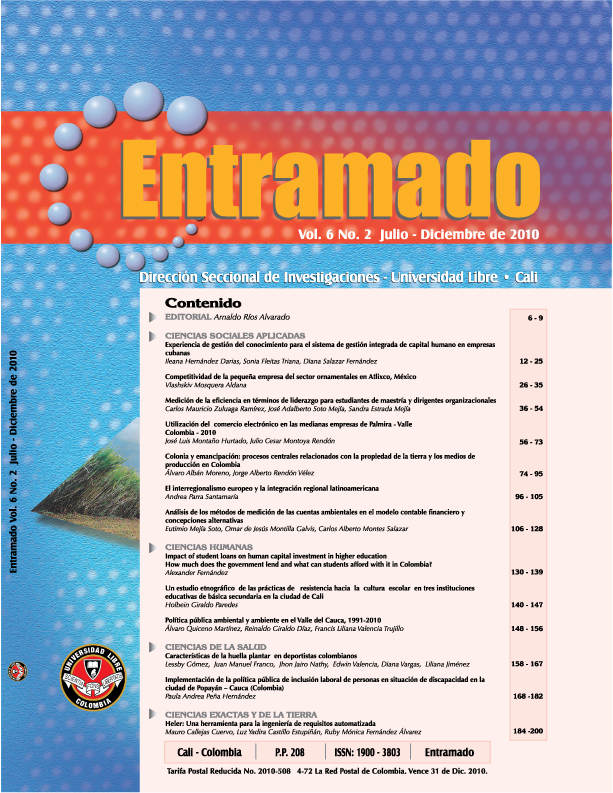Características de la huella plantar en deportistas colombianos
Palabras clave:
Pie, Antropometría, Biomecánica, DeporteResumen
El objetivo principal de esta investigación es establecer la influencia de la práctica deportiva en las características de la huella plantar en practicantes de atletismo, levantamiento de pesas y natación. El estudio se realizó a 280 deportistas participantes de los XVIII Juegos Deportivos Nacionales, 50 practicantes de levantamiento de pesas, 135 de atletismo y 95 de natación. A cada uno se le aplicó una encuesta y se hizo un fotopodograma de la huella plantar. Se aplicó el método de Hernández Corvo para determinar el tipo de pie; para cuantificación del largo y ancho se utilizó el software Fotoanalisi, y el tipo de ante pie se determinó a partir de la observación de la fotografía de la huella. Los resultados mostraron una diferencia estadísticamente significante entre deportes, tanto para el pie derecho como para el izquierdo, con una alta prevalencia de pie cavo, en natación y en atletismo. En levantamiento de pesas se observa un mayor número de deportistas en el rango de normalidad. Se determinó un alto porcentaje de individuos cuyos pies derecho e izquierdo mostraron asimetría. Existió diferencia estadística en el tipo de antepié, así como en el largo y ancho del mismo. Se concluye que hay una tendencia a un tipo de pie cavo, independiente del deporte practicado, aunque la prevalencia de los mismos fue mayor en los practicantes de atletismo y natación. Se evidenció un alto porcentaje de asimetrías en el tipo de pie, longitudes y ancho de la huella.
Descargas
Referencias
2. JONE,S R y HUNT, A. The diagnosis of flat fot in the child. In: The jornal of bone and join surgery 67(1) (1985);71 8.
3. RAZERGHI M, BATT M. Foot type classification: a critical review of current methods. In: Gait & Posture2002 15(3)(June);282 - 91.
4. RAHIMI A, NAKHAEE Z. The relationship between the height of the medial longitudinal arch and the ankle and knee injuries in professional runners. In: Gait & Posture 28(s2) (2008); p.104.
5. Lesiones deportivas frecuentes. Acta pediátrica costarricence [online]. 2003, vol.17, n.2 [citado 2010-05-11], pp. 65-80 . Disponible en: <http://www.scielo.sa.cr/scielo.php?script=sci_arttext&pid=S1409-00902003000200006&lng=es&nrm=iso>. ISSN 1409-0090.7.
6. ABIAN J, DURAN L, LARA A, JIMÉNEZ L, AGUADO X. Fuerzas de reacción del suelo en pies planos y cavos. 2000.
7. QUEEN R, MALL N, NUNLEY J. Difference in plantar loading between flat and normal feet during diferent athletic task. gaitpost2008;12(010).


